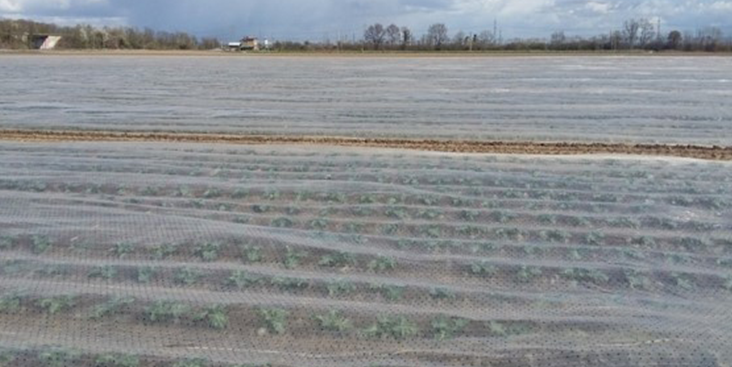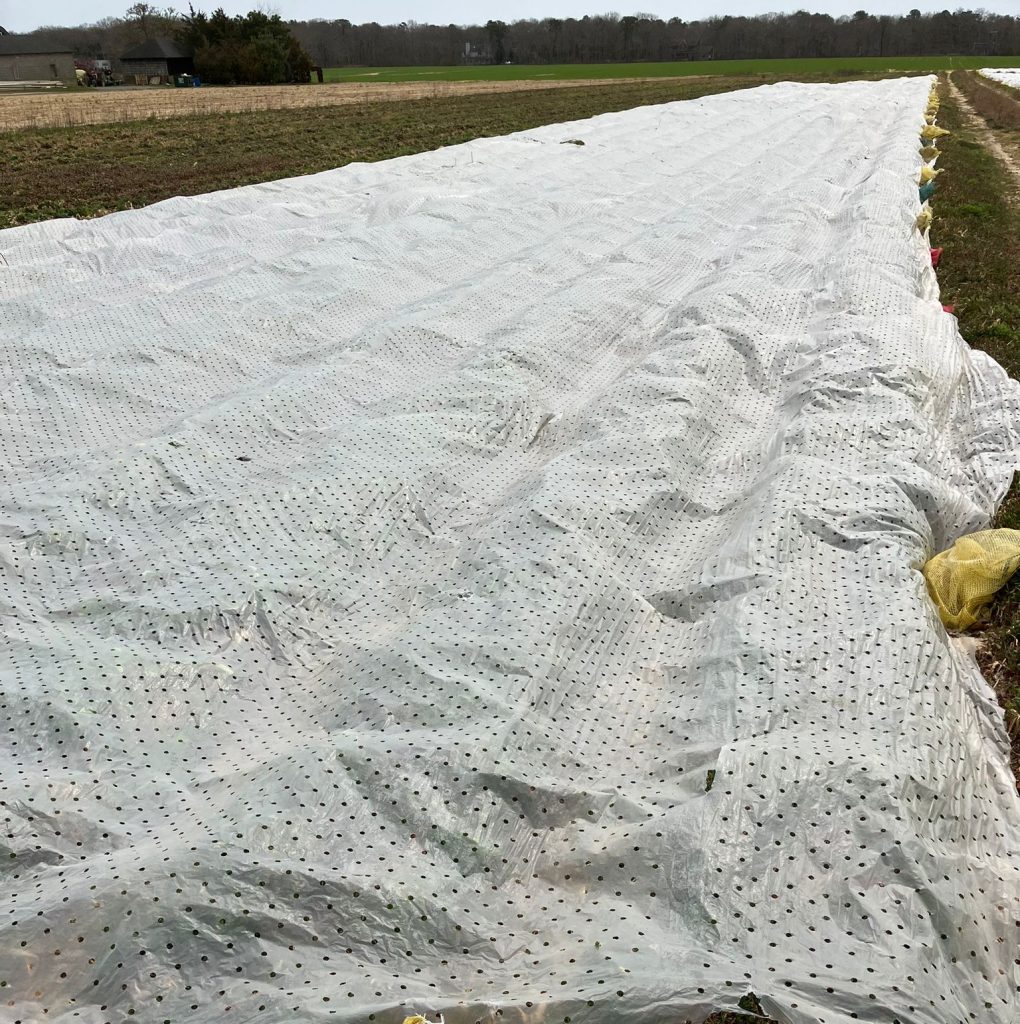![[eBook] Increased use of oxygen barrier films](https://agriplasticscommunity.com/wp-content/uploads/ebook6-550x310_ENG-150x150.png)
![[eBook] Increased use of oxygen barrier films](https://agriplasticscommunity.com/wp-content/uploads/ebook6-550x310_ENG-150x150.png)


Perforated multi-row covers provide several advantages to crops, but mainly it is an alternative to protect crops against cold and/or heavy rains at a low cost, offering efficiency in the management of agricultural production and a better use of natural resources.
No structure is needed for its installation, and all that is needed to cover the crop is to place this transparent or clear plastic mulch over the plantation and fix it or secure it with ridges.
As Javier Pery explains in his article published on LinkedIn, “Simple, sustainable and cost-effective low temperature protection,” clear perforated multi-row covers are LDPE-based films with diamond-shaped perforations up to 500/m2 (perforation diameter: 10 mm). The floating covers are placed over the crops after planting, covering several rows at the same time. The covers change the microclimatic conditions generating a windbreak and tunnel effect.”
Perforated multi-row covers are mainly used in Europe, but their advantages may be replicated in other regions. As an example, we will discuss some field tests being conducted in the United States.
Temperature control is one of the most noticeable benefits. Perforated multi-row covers can influence soil temperature, providing a more suitable environment for crop growth.
As Pery explains in his article, perforated multi-row covers generate a greenhouse effect that “increases soil and air temperature, depending on the intensity of radiation and wind speed. The minimum air temperature increases by 2º or 3ºC. The minimum soil temperature (tested at a depth of 10 cm) also improves by about 2º C.”
During daylight hours, plastic covers help increase soil temperature. This increase favors a more agile and healthy growth of plants.
Crops can benefit from higher temperatures in cold climates, which has a positive impact on their development.
In contrast, during the night, the plastic covers act as insulators, minimizing heat loss from the soil.
This helps to maintain more stable temperatures, avoiding heat stress that can negatively affect plants in extremely cold locations.
They create an ideal microclimate for cultivation. By forming a tunnel effect, these plastics reduce wind speed, preserving soil moisture, and limiting evaporation.
This controlled environment allows for more humid conditions, which are very beneficial for plants.
Perforated multi-row covers are effective in water management. They allow better infiltration and reduce runoff, ensuring more water stays in the soil for longer periods. This is vital for root development and nutrient availability, improving plant health and yield.
Since these perforated multi-row covers or floating covers are clear or transparent, they allow greater light transmission, favoring soil warming. However, they should be used carefully to prevent overheating in very hot climate locations.
Due to this high light transmission, photosynthesis is increased compared to traditional covers.
All these advantages favor the early growth of the plants, in addition to avoiding damages and losses caused by the increasingly changing climate.
Perforated multi-row covers are used in crops such as tubers or brassicas (brussels sprouts, cauliflower, kale, broccoli…), but their use is extended to other crops such as strawberries, melon, or cantaloupe, and sweet corn, among others, as we will see in the section on field tests.
In the United States, a team from Armando Alvarez Group is developing different field tests on melon/cantaloupe, sweet corn, strawberries, beans, and watermelon crops. Thanks to the use of perforated multi-row covers, growers anticipate the following:
Below is a video of a visit done by the team from Armando Alvarez Group to these crops in the United States:
On the other hand, Cornell University in the United States conducted another test with Armando Alvarez Group’s perforated multi-row covers for frost protection of strawberry crops. The results, after using the covers for three seasons, were as follows:

Test with Armando Alvarez Group’s perforated multi-row covers for frost protection of strawberry crops
The choice to use perforated multi-row covers for agriculture is a strategic decision that can have a significant impact on the productivity and sustainability of an agricultural business.
With the agricultural landscape constantly evolving, remaining up to date with the latest developments will be crucial for farmers looking to improve their yields and profitability, while committing to sustainable, and efficient farming practices.
Sources: